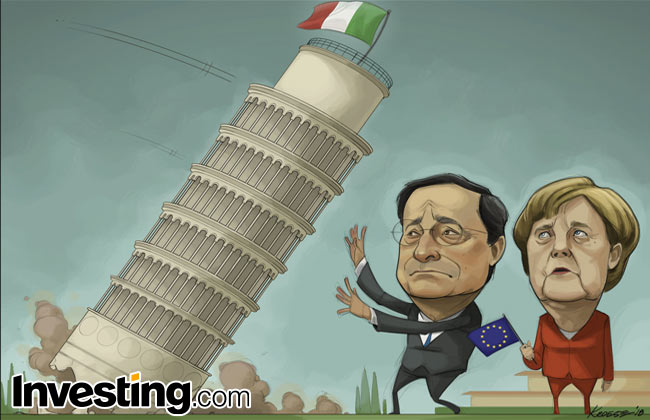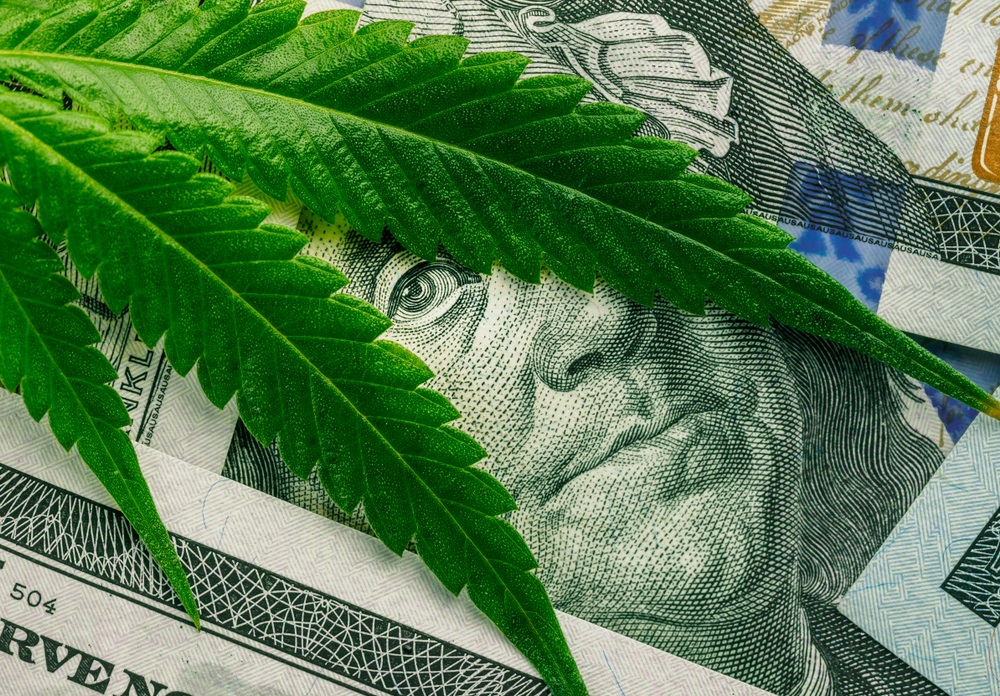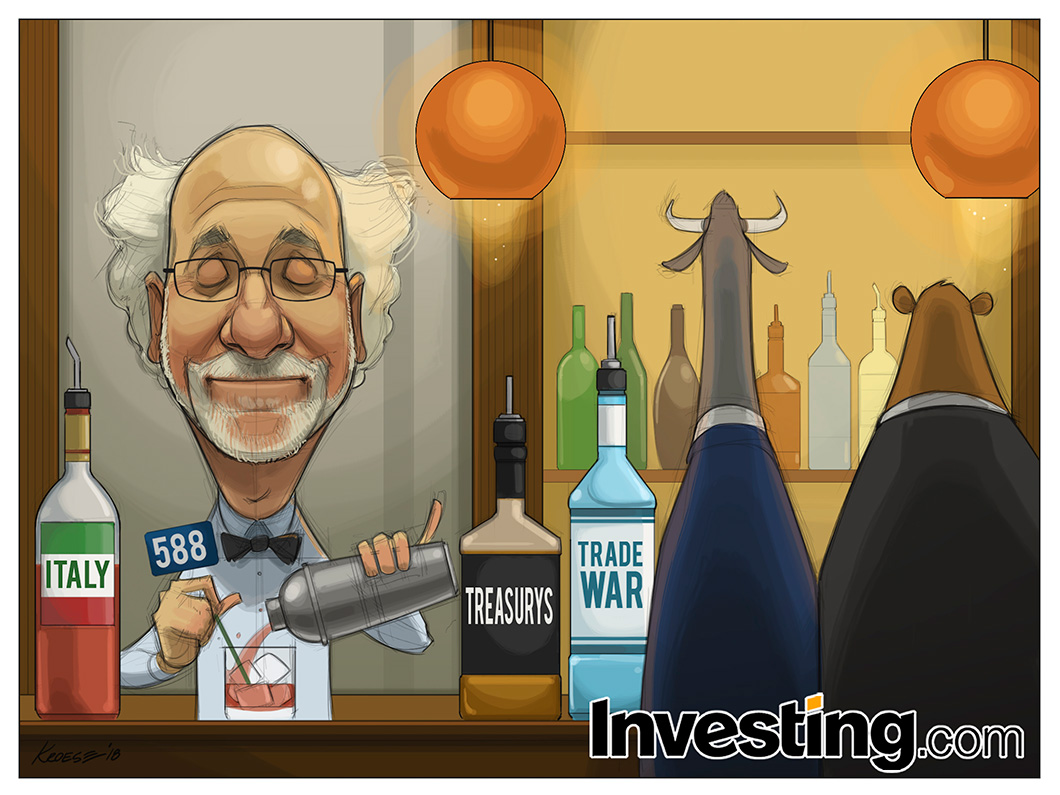
- All Instrument Types
- Indices
- Equities
- ETFs
- Funds
- Commodities
- Currencies
- Crypto
- Bonds
- Certificates
Please try another search

A Look Back at 2018’s Most Popular News Stories
You won't find too many people saying that 2018 was a boring year in terms of economical, political and geopolitical developments. Major political events shook markets around the world, FAANG stocks started getting pummeled, and new industries grabbed the attention of investors trying to capitalize on upcoming trends. We also witnessed an epic drop in the once high-flying cryptocurrency market.
We here at Investing.com love to look at data as a means to try and anticipate where things are headed, so we decided to look back at the news stories that you, our readers, were most interested in and what it means for the market.
Below you will find which story was the most-read of each month of 2018.
2018’s Top Monthly Stories
January - Is Bitcoin Going Down?
In early January, the Bitcoin craze was still going strong and it was looking like, despite its volatile nature, the world’s first cryptocurrency would keep getting stronger. There were talks about investment groups setting up cryptocurrency ETFs, just waiting for governments to recognize it as a fiat. However, by mid-January BTC’s value plunged in a double-digit selloff. The main reason was its over-inflated value, which made it harder for new investors to join the party, thus reducing the influx of money to the currency. As the rise in prices slowed, so did the demand for Bitcoin, resulting in a decline that continued until the end of 2018.
February - Trump Doesn't Want SNAP
U.S. president Trump is known to make bombastic statements and unilateral decisions, so when in February, Trump proposed a major change in the country’s SNAP (Supplemental Nutrition Assistance Program), replacing food stamps with ‘100 Percent American’ food packages, sent shares of Dollar Tree Inc (NASDAQ:DLTR) down. The proposed change would end up reducing the cost to the U.S. government by $214 billion over a decade.

March - Is the King of Crypto Dying?
The cryptocurrency bubble had clearly burst, and analysts were watching as even the king of crypto kept going down, losing nearly 33% by the end of March. By now, strategists were expecting BTC to reach a ‘Death Cross’, as the $2,800 level loomed ahead. By the end of the year, Bitcoin would reach a low of $3,212, losing 77% from its highest point in January.
April - Market's Going Down
April was the beginning of Q1 earnings season, and companies started releasing their quarterlies. Investors took note that the U.S. 10-Year Treasury yield went higher than it has in four years, fanning cost worries and sending the market down. The DJIA, SPX, and IXIC were down by 1.34%-1.74%, along with technology SPLRCT stocks, and other major industry stocks.

May - Italy Sends the Euro Down
May saw Italy, Europe’s 3rd-largest economy in turmoil as repeat elections seemed to be inevitable, prompting selloffs and sending the Euro to an 11-month low. Worries were raised that the European Central Bank would have to intervene to stabilize the Euro. In the meanwhile, the U.S. Dollar was getting stronger, battering almost all emerging market currencies, while Trump and Kim Jong Un played mind games with each other.
June - Gold Doesn't Shine as Bright
The U.S.-led Koreas peace talks continued as Trump prepared to meet with Kim Jong Un after attending the G7 summit in Canada. The U.S. Central Bank prepared to raise interest rates for the 4th time this year, as the unemployment rate was at an 18-year low. Gold and Gold Futures prices settle below $1,300, and fears from last month’s Italy’s potential elections were averted as the two main parties agreed to join in a coalition.

July - Powell's Optimism Bumps the Market
Q2 earnings season opened with Federal Reserve Chairman Powell expressing optimism for U.S. economy, prompting market climbs. The Federal Reserve reported an increase in U.S. industrial production thanks to a manufacturing rebound, which boosted earnings optimism. The market was moving back up, with the S&P 500 and the Nasdaq Composite reaching several new highs.
August - Tariff Troubles
Fears of the ongoing U.S.-China tariff war combined with disappointing earnings resulted in Wall Street taking a beating. As Turkish president Erdogan doubled tariffs on some U.S. imports, China lodged a complaint with the WTO regarding the American trade policies. Elon Musk entertained the idea of taking Tesla Inc (NASDAQ:TSLA) private, causing its shares to drop 2.6%, while cannabis stocks made gains, with Canopy Growth Corp (TO:WEED) soaring by over 30%.

September - Gold's Going Down
The U.S.-China trade war continued and U.S. president Trump got ready to impose $200 billion on Chinese imports. However, investors seemed to be avoiding buying gold, which is usually treated as a safe-haven in times of turmoil, instead opting to invest in the U.S. dollar. As a result, Gold Futures continued to go down, reaching $1,201.10 on the Comex division. Other precious metals, such as Silver Futures, weren’t faring much better. Copper Futures also went down as China accounts for nearly 50% of copper consumption in the world, affecting investor confidence in the base metal.
October - Gold's Back Up
The U.S. dollar was still going strong, but gold seemed to recover, going back up above $1,200 - the psychological “safe haven” point - after reaching $1,182.30 on September 27th. Meanwhile, there were concerns about Italy’s new government fiscal plan breaching EU budget guidelines, by increasing spending and reducing taxes. Investors awaited a speech by Fed Chairman, Jerome Powell, to see if they should expect interest rates hikes in December.

November - U.S.-China Chillout
Following a positive meeting between U.S. president Trump and his Chinese counterpart Xi Jinping, Wall Street seemed to be reversing losses, investors were hopeful that the trade war will ease up or even end. Meanwhile, General Motors (NYSE:GM) shares dropped 2.5% as Trump warned he will remove their subsidies after GM announced they will be laying off thousands of workers.
December - Tariff Man!
In a series of tweets, Trump signaled his willingness to resume the trade war with China, calling himself “Tariff Man”. As a result, the Dow fell 2.25%, and the S&P 500 sank 2.4%. Investors felt bearish sentiments while Goldman Sachs Group Inc (NYSE:GS) and Citigroup Inc (NYSE:C) fell 3% and 5% respectively, leaving everyone to wonder if the year’s economic growth is about to reverse.
Cryptocurrencies captured your attention in the first couple of months of 2018, but gold seemed to be most interesting to investors in the later part of the year. Throughout this time, the U.S.-China trade war was brewing, and market volatility seemed to culminate in December with large parts of the market turning red again. Will 2019 see an end to the trade war, or an escalation? Will Donald Trump keep up his attacks on the Fed? And what about the FAANG group of stocks? Let us know your thoughts in the comments.
Are you sure you want to block %USER_NAME%?
By doing so, you and %USER_NAME% will not be able to see any of each other's Investing.com's posts.
%USER_NAME% was successfully added to your Block List
Since you’ve just unblocked this person, you must wait 48 hours before renewing the block.
I feel that this comment is:
Thank You!
Your report has been sent to our moderators for review





Add a Comment
We encourage you to use comments to engage with other users, share your perspective and ask questions of authors and each other. However, in order to maintain the high level of discourse we’ve all come to value and expect, please keep the following criteria in mind:
Enrich the conversation, don’t trash it.
Stay focused and on track. Only post material that’s relevant to the topic being discussed.
Be respectful. Even negative opinions can be framed positively and diplomatically. Avoid profanity, slander or personal attacks directed at an author or another user. Racism, sexism and other forms of discrimination will not be tolerated.
Perpetrators of spam or abuse will be deleted from the site and prohibited from future registration at Investing.com’s discretion.